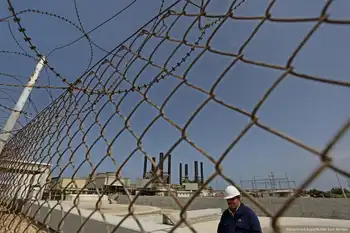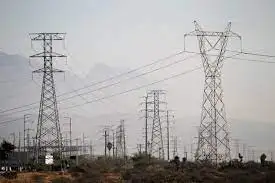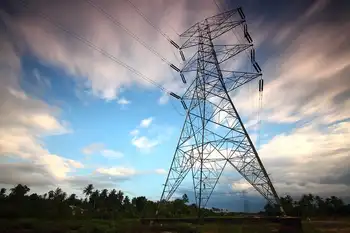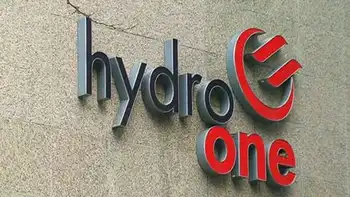Vogtle lays groundwork for first U.S. reactors in decades
By Augusta Chronicle
NFPA 70e Training
Our customized live online or in‑person group training can be delivered to your staff at your location.

- Live Online
- 6 hours Instructor-led
- Group Training Available
"It's exciting to be part of something like this," the 23-year-old University of Alabama engineering graduate said. "It's something that will make history."
Mr. Harvell, who graduated three months ago and is building a home in Columbia County, is part of the work force that will operate the first new commercial nuclear power reactors in decades — right here in Georgia.
"I never thought much about the energy industry," he said. "But as Vogtle got more and more real, and I got closer to graduation, I got more interested." Overseeing part of the site work for the Vogtle Electric Generating Plant reactors is the beginning of a career he hopes will extend well into the operations phase of the $14.5 billion project.
Crews already work 10-hour shifts — 20 hours a day, seven days a week — to move 4 million cubic yards of dirt in preparation for the AP1000 reactors expected to go online in 2016 and 2017.
Although there are dozens of nuclear plants on the drawing board, Vogtle is leading the pack in its quest for regulatory approval and is poised to become the first such project to commence U.S. operations in decades — which means it will attract more than its share of attention and scrutiny.
"We are the icon," said David Jones, Southern Nuclear's site vice president for Units 3 and 4. Southern Nuclear is Southern Co.'s nuclear plant operating company. "Everyone's eyes and ears are on Vogtle." The technology involved in the next generation of reactors is so different from its predecessors that engineers trained on older units will not be interchangeable with those who operate the new ones.
"Even the control room will be completely new," Mr. Jones said. "It is slightly larger than a bedroom. It will be very modern, with plasma screens. It will be very different." A unique feature of the reactors is a passive safety system that uses natural forces such as gravity and convection. In an accident, the plant is designed to shut down without operator action and without power or pumps. Emergency cooling water tanks 100 feet above the ground will hold more than 6 million pounds of water.
The reactors, he said, will have fewer pumps and tanks, miles less electrical cable and barely half the valves of predecessors. They will be easier to assemble and operate, partly because of a modular design that incorporates components from many locations.
"These new plants take advantage of all we've learned over the last 40 years," said Ohio State University nuclear engineering professor Richard Denning, an expert in nuclear reactor safety and risk analysis. "They will be safer than our existing plants." There are 104 nuclear power plants operating in the U.S., producing 20 percent of the nation's power. Nearly all, he said, are getting a 20-year extension through renewed operating licenses. The growing number of plants on the drawing board will benefit from more than new technology.
"They will have standardized designs, streamlined permitting and will be overseen by the best, most independent regulatory agency in the world," Dr. Denning said.
The Nuclear Regulatory Commission's new "combined operating license" program — which Plant Vogtle will be among the first to navigate — includes safeguards that could avoid some of the costly delays that plagued the last generation of reactors in the 1970s and 1980s.
The program simultaneously authorizes construction and operation of the reactors and replaces a system in which utility companies worked for years to obtain a license, then would become mired in changing regulations in their quest for a second license to operate a plant.
Dr. Denning cautioned, however, that the first few facilities to go through the process could encounter delays as the system is tested and perfected.
"That is a significant risk for the first ones," he said.
Mr. Jones, however, doesn't foresee such delays with the Plant Vogtle project.
The early site permit already issued for the project allows a jump-start for some of the initial work that is already under way, he said.
"In a house analogy, we can build the basement, and we're working with the NRC on building the house," he said.
Previous reactors were site built and required huge numbers of workers. Employment at Vogtle peaked in the 1980s at almost 14,000 during the construction of Units 1 and 2.
Construction employment for Units 3 and 4 is expected to peak at 3,000 to 3,500 in 2013-14, and much of that labor will be local. So far, the main contractor, Shaw Group Inc., has let 37 contracts, of which 24 are to Georgia companies and 19 are within 100 miles of the plant.
The smaller construction work force is in part a result of the simpler reactor design and the ability to build components elsewhere that will be shipped to Burke County for assembly. Those components will come from as far away as Japan, South Korea and Italy, with some pumps made in Pennsylvania and fuel manufactured in South Carolina.
The next major step in the project is expected to occur in 2010, when the NRC issues the combined operating license. After that hurdle, construction will proceed at full speed.











